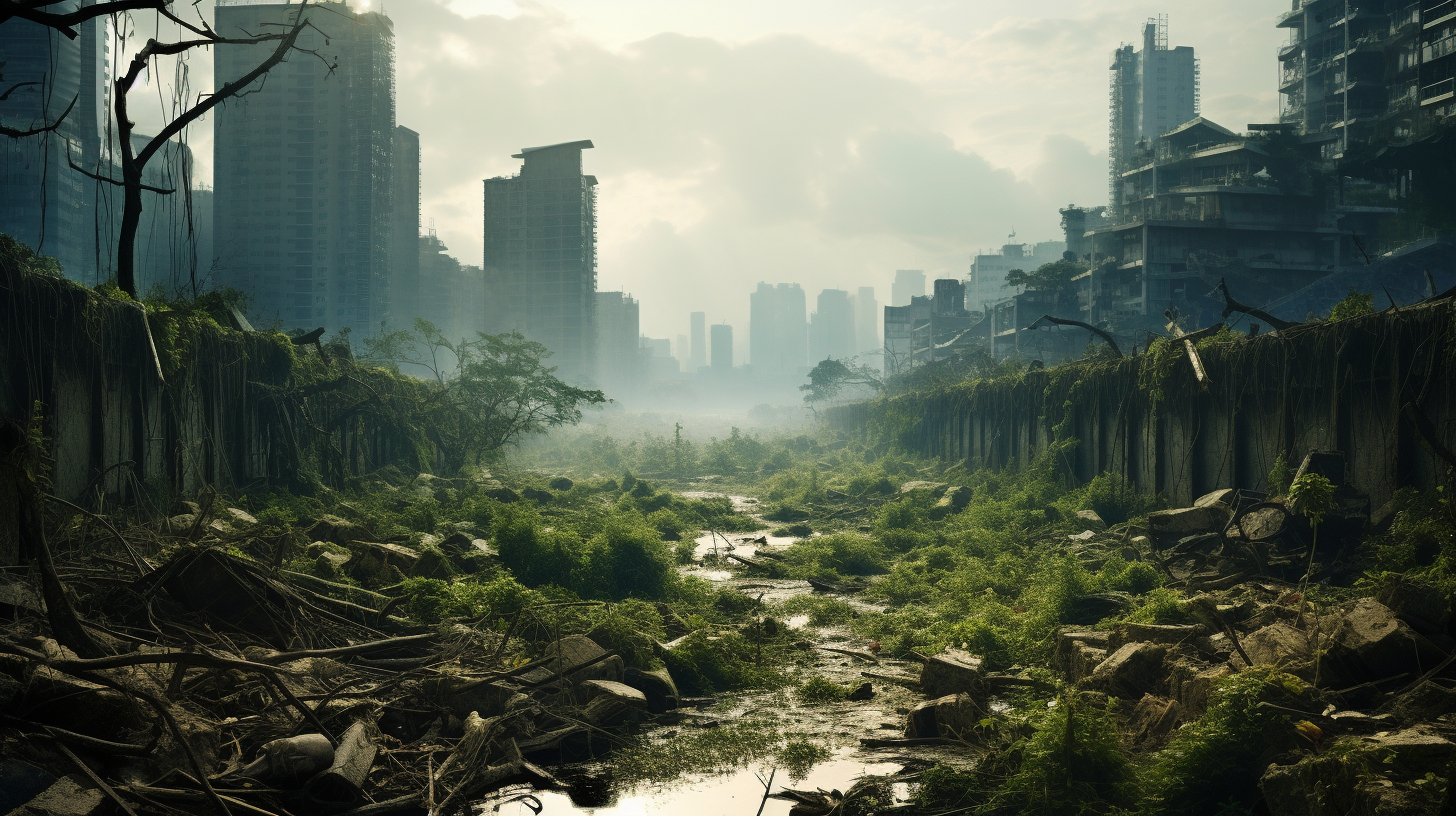Under the veil of toxic fogs that now mask the skeleton of our once vibrant cities, there lurks a feeble whisper of a question: Can the accidental urban jungles that have clawed their way through cracked pavements and shattered high-rises serve as the lungs of a dying Earth?
‘Breathless – Can Urban Jungles Restore Our Air?’ embarks on a choking journey through the desolate corridors of skyscrapers-turned-trees, where the air grows thick, not with smog, but with the bittersweet scent of wildflowers battling with rust.
Our narrative entangles with Ivy, strangler figs, and moss reclaiming corporate glass towers – a poignant juxtaposition of green resurgence against a backdrop of decay. We are brought face to face with the irony of this resurgence: the resurgence aimed not at restoring a world for humans but at erasing the last traces of their folly.
In this dense thicket of nature’s revolution, we uncover unsettling truths: The air here stands markedly cleaner but painfully devoid of human laughter. Monitors and measurements tell tales of a significant decrease in air particulates, yet what good are these statistics if there are scarce lungs left to savor the remediated breaths?
As we traverse deeper, we meet the custodians of this grim utopia: birds nesting in the metal skeletons of our ambitions, insects humming through the barren hollows of our commerce, and feral animals roaming the overgrown avenues of our excess. They have adapted to our ruins, forming an ecosystem too complex to be disentangled by the hands that once held dominance.
The experts are divided. Some herald the “inevitable triumph of nature” while others mourn “an ecological renaissance born too late.” Interviews with environmental scientists and urban planners reveal a schism between reluctant hope and the grim acknowledgment of our past environmental transgressions.
But what of our future? Is there a place for humanity in these accidental Edens, or have we become mere ghosts in the green thickets of our own making? The article probes at the heart of this uncertainty, offering no solace but demanding contemplation with the gravity of a gravestone.
Finally, we consider the possibility of learning from this chaotic re-greening. By studying these urban jungles, can we foster new design philosophies for future habitations, ones that integrate rather than dominate the local ecologies?
The inquiry ends as abruptly as the arboreal labyrinth presses in – suffocating, overwhelming, yet oddly comforting in its wild embrace. And there, amidst the aching beauty of our planet’s indomitable will, we gasp for clarity in the very air we once poisoned – breathless.
